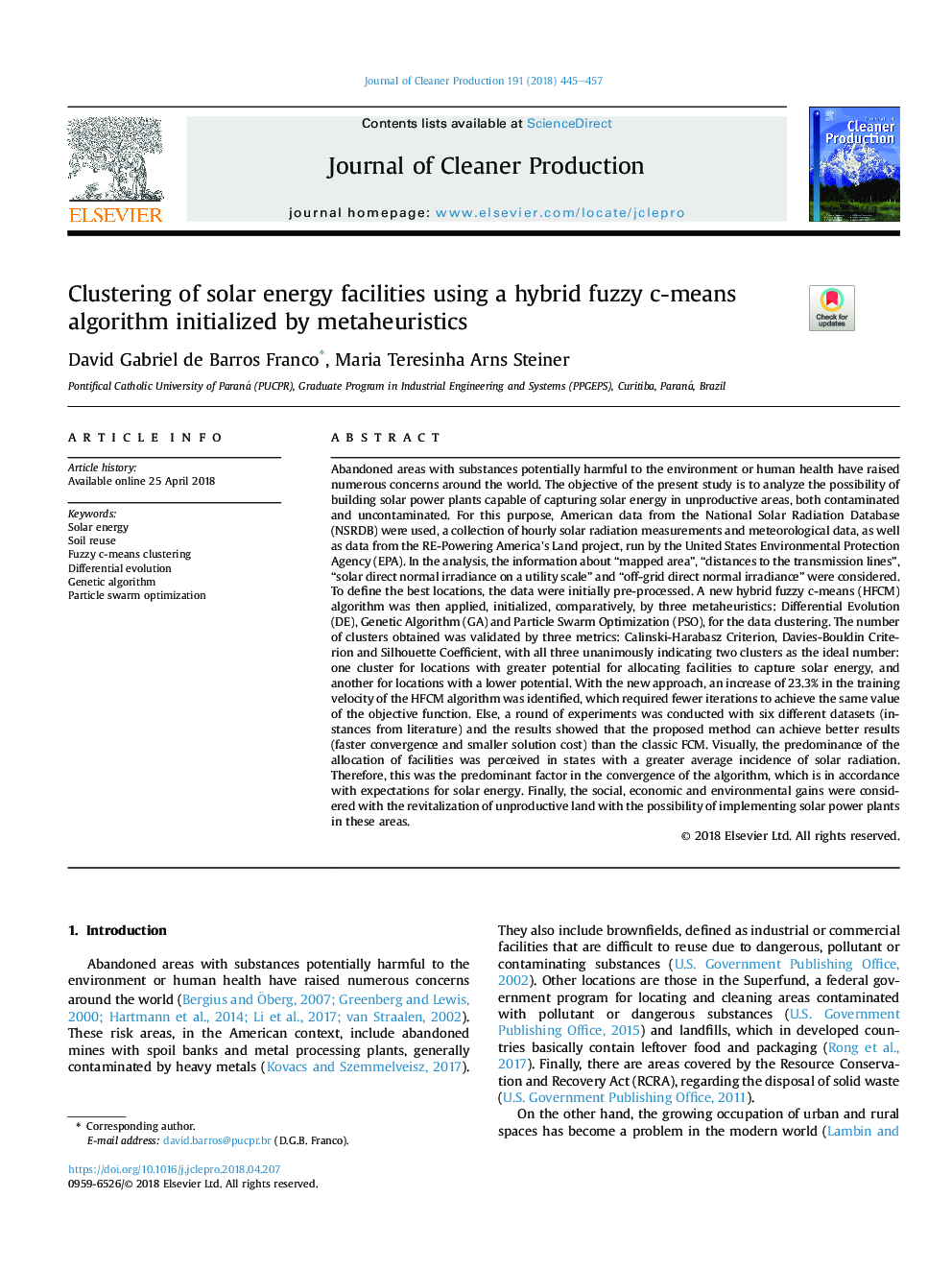| کد مقاله | کد نشریه | سال انتشار | مقاله انگلیسی | نسخه تمام متن |
|---|---|---|---|---|
| 8094829 | 1522062 | 2018 | 13 صفحه PDF | دانلود رایگان |
عنوان انگلیسی مقاله ISI
Clustering of solar energy facilities using a hybrid fuzzy c-means algorithm initialized by metaheuristics
دانلود مقاله + سفارش ترجمه
دانلود مقاله ISI انگلیسی
رایگان برای ایرانیان
کلمات کلیدی
موضوعات مرتبط
مهندسی و علوم پایه
مهندسی انرژی
انرژی های تجدید پذیر، توسعه پایدار و محیط زیست
پیش نمایش صفحه اول مقاله

چکیده انگلیسی
Abandoned areas with substances potentially harmful to the environment or human health have raised numerous concerns around the world. The objective of the present study is to analyze the possibility of building solar power plants capable of capturing solar energy in unproductive areas, both contaminated and uncontaminated. For this purpose, American data from the National Solar Radiation Database (NSRDB) were used, a collection of hourly solar radiation measurements and meteorological data, as well as data from the RE-Powering America's Land project, run by the United States Environmental Protection Agency (EPA). In the analysis, the information about “mapped area”, “distances to the transmission lines”, “solar direct normal irradiance on a utility scale” and “off-grid direct normal irradiance” were considered. To define the best locations, the data were initially pre-processed. A new hybrid fuzzy c-means (HFCM) algorithm was then applied, initialized, comparatively, by three metaheuristics: Differential Evolution (DE), Genetic Algorithm (GA) and Particle Swarm Optimization (PSO), for the data clustering. The number of clusters obtained was validated by three metrics: Calinski-Harabasz Criterion, Davies-Bouldin Criterion and Silhouette Coefficient, with all three unanimously indicating two clusters as the ideal number: one cluster for locations with greater potential for allocating facilities to capture solar energy, and another for locations with a lower potential. With the new approach, an increase of 23.3% in the training velocity of the HFCM algorithm was identified, which required fewer iterations to achieve the same value of the objective function. Else, a round of experiments was conducted with six different datasets (instances from literature) and the results showed that the proposed method can achieve better results (faster convergence and smaller solution cost) than the classic FCM. Visually, the predominance of the allocation of facilities was perceived in states with a greater average incidence of solar radiation. Therefore, this was the predominant factor in the convergence of the algorithm, which is in accordance with expectations for solar energy. Finally, the social, economic and environmental gains were considered with the revitalization of unproductive land with the possibility of implementing solar power plants in these areas.
ناشر
Database: Elsevier - ScienceDirect (ساینس دایرکت)
Journal: Journal of Cleaner Production - Volume 191, 1 August 2018, Pages 445-457
Journal: Journal of Cleaner Production - Volume 191, 1 August 2018, Pages 445-457
نویسندگان
David Gabriel de Barros Franco, Maria Teresinha Arns Steiner,